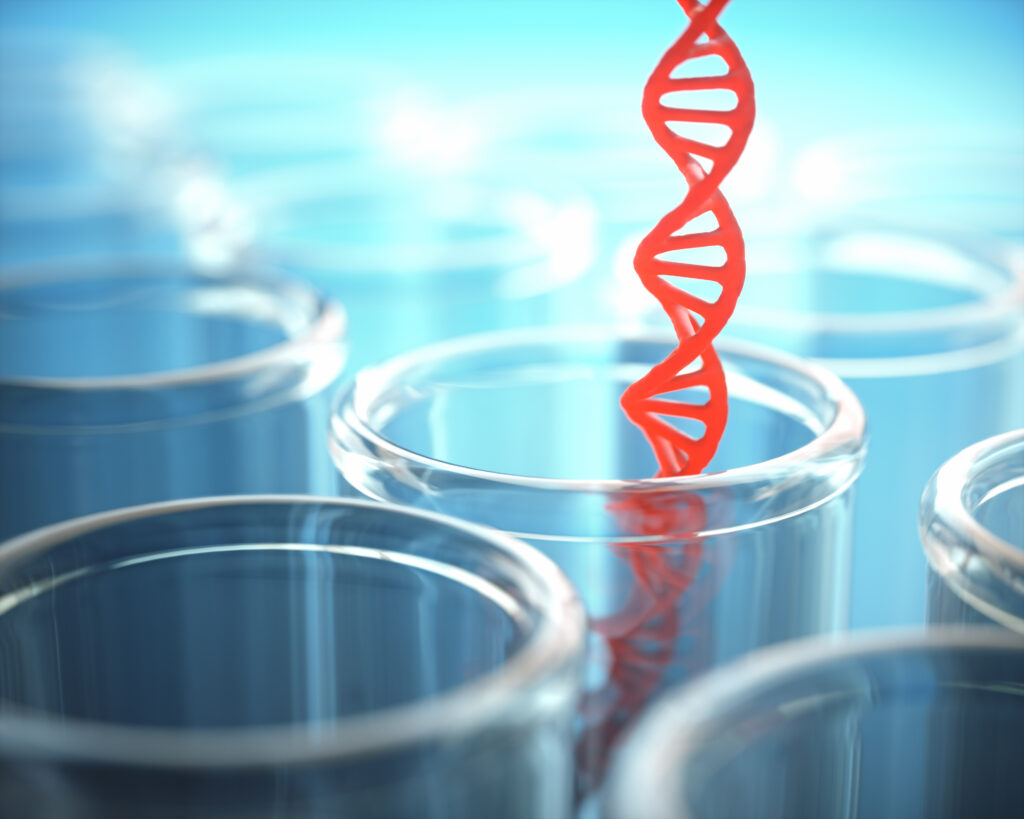There are two main types of prenatal tests: prenatal “screening” tests and prenatal “diagnostic” tests.
Prenatal “Screening” Tests tell you your risk of having a child with certain chromosomal abnormalities and birth defects. Screening tests are best at ruling OUT problems and flagging potential issues. They cannot, however, confirm that a problem exists. A negative screening test is reassuring, whereas a positive screening test means further testing (namely a diagnostic test) is needed.
Prenatal “Diagnostic” Tests are performed if the screening test is positive or if the baby is at a higher-than-average risk of having a specific chromosomal abnormality or birth defect. Diagnostic tests are more invasive and a bit riskier than screening tests. They’re also more expensive. The beauty of the diagnostic tests is that they can confirm whether a baby is going to have certain health problems before they’re even born.
The Prenatal Screening Tests
Let’s Start Off by Comparing the Three Types of Prenatal SCREENING Tests: The First Trimester Screen, the NIPS Test, and the Second Trimester Quad Screen.
Each of these tests is a simple blood test (although the first trimester screen includes an ultrasound as well). The tests vary slightly, though, in terms of which diseases they screen for and when they’re performed. Get Wise(r) about the similarities & differences between these three prenatal screening tests below:
| The First Trimester Screen | Non-Invasive Prenatal Screening (NIPS or NIPT) |
The Second Trimester Screen (“Quad” Test) | |
|---|---|---|---|
| When Does the Test Happen? |
|
|
|
| What Does the Test Entail? |
|
|
|
| What Does the Test Measure? | The Blood Test Measures 2 Substances:
The Ultrasound Measures the Thickness of the Baby’s “Nuchal Fold” (the Fluid-Filled Space at the Back of the Neck). Insider Info: A thicker-than-normal nuchal fold is a soft marker for Down Syndrome. |
The blood test analyzes small fragments of “placental” DNA that can be found circulating in Mom-to-be’s blood. This placental DNA is nearly identical to the fetus’s DNA and, as a result, almost always reflects the genetic makeup of the fetus. | The Blood Test Measures 4 Substances:
|
| What Do the Results Tell Me? |
Your Odds of Having a Baby With:
|
Your Odds of Having a Baby With:
Bonus: The NIPS test can also tell you the sex of your baby. |
Your Odds of Having a Baby With:
|
| Pros |
|
|
|
| Cons |
|
|
|
The Bottom Line: Which prenatal screening test you end up doing (if any) is up to you and your doctor. Many couples choose to do the first trimester screen or the NIPS test (over the second trimester screen) because these tests are done earlier in the pregnancy. This gives couples more time to discuss their options. When comparing the first trimester screen and the NIPS test, the NIPS test appears to be more accurate, but it’s also more expensive and isn’t offered everywhere.
The Prenatal DIAGNOSTIC Tests

If your screening test is positive or you’re at a higher-than-average risk of having a baby with a chromosomal abnormality (because of your age or your family history) your doctor will recommend a diagnostic test. The two main prenatal diagnostic tests are:
1. Chorionic Villus Sampling (CVS)
AND
2. The “Genetic” Amniocentesis
Double Take: There’s another type of amniocentesis that’s used during pregnancy called the “maturity” amniocentesis. Instead of looking at the baby’s chromosomes, however, the maturity amniocentesis assesses how mature the fetus’s lungs are towards the end of pregnancy (in case the baby needs to be delivered early).
Let’s Compare and Contrast The Two Prenatal Diagnostic Tests in the Chart, Below:
| Chorionic Villus Sampling (CVS) | The “Genetic” Amniocentesis | |
|---|---|---|
| When Does the Test Happen? |
|
|
| What Happens During the Test? | A needle is inserted through Mom-to-be’s abdomen (or a catheter is inserted through her cervix) and a sample of cells from the placenta is extracted. Reality Check: Although the procedure sounds painful, it’s not that bad. | A needle is inserted through Mom-to-be’s abdomen under ultrasound guidance to collect a small amount of amniotic fluid from the amniotic sac (the sac the fetus hangs out in). The fluid is then sent to a genetics lab to be analyzed. |
| What Will the Test Tell Me? | The CVS test reveals your baby’s “karyotype” (i.e. their chromosomal make-up). The karyotype will tell you if your baby has extra or missing chromosomes (or pieces of chromosomes). | Like the CVS test, the “Genetic” Amniocentesis will show you your baby’s karyotype. |
| Pros |
|
|
| Cons |
|
|
Summary: Both the CVS test and the “Genetic” Amniocentesis are reliable prenatal diagnostic tests. The CVS test can be done earlier in the pregnancy which tends to make it a more desirable option for expectant couples. It does have a slightly higher rate of miscarriage, though, so this is a factor when weighing the two options.
The Bottom Line
Use the info above to help you make an informed decision about what type of prenatal testing you want to do (if any).








